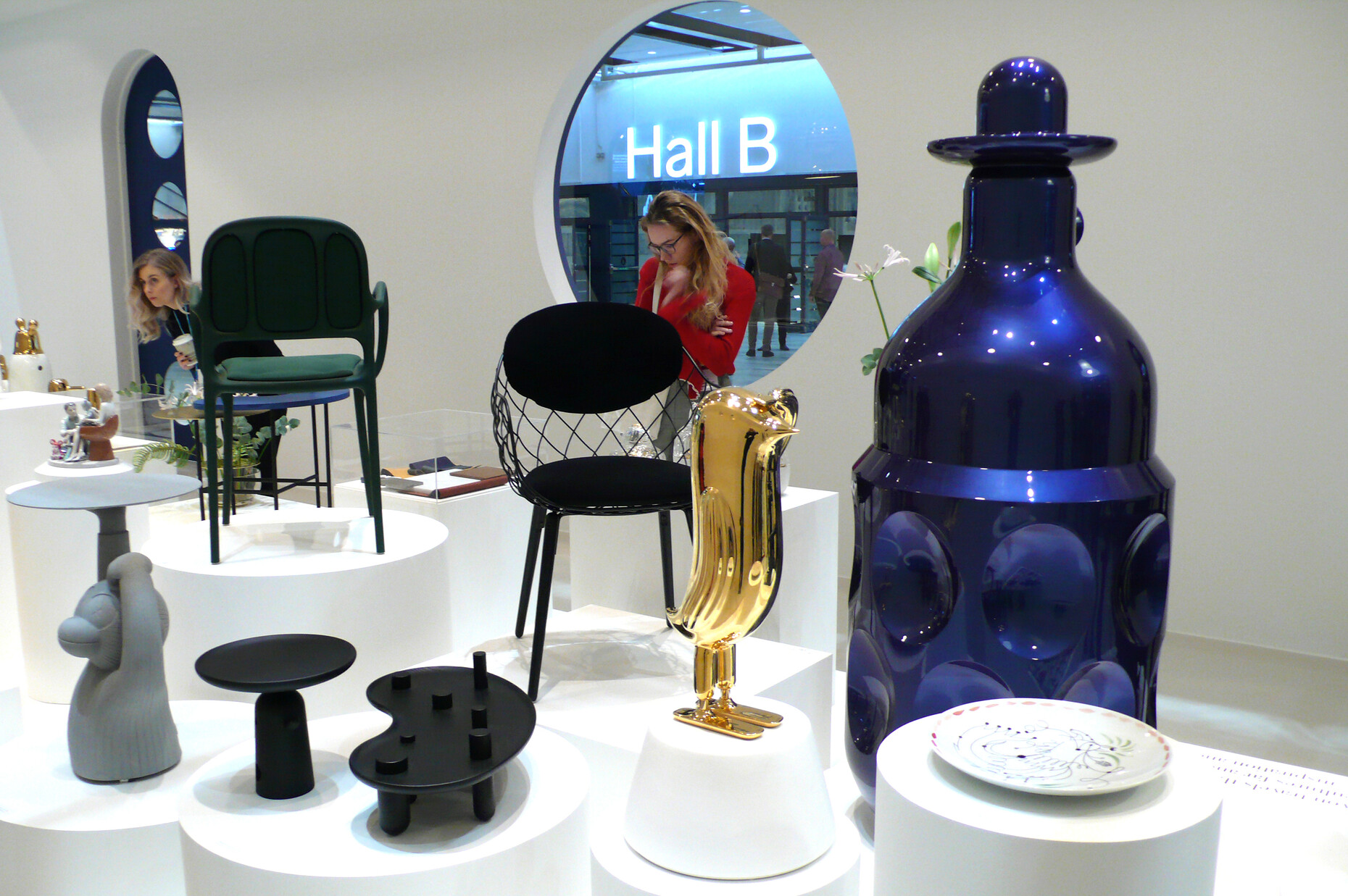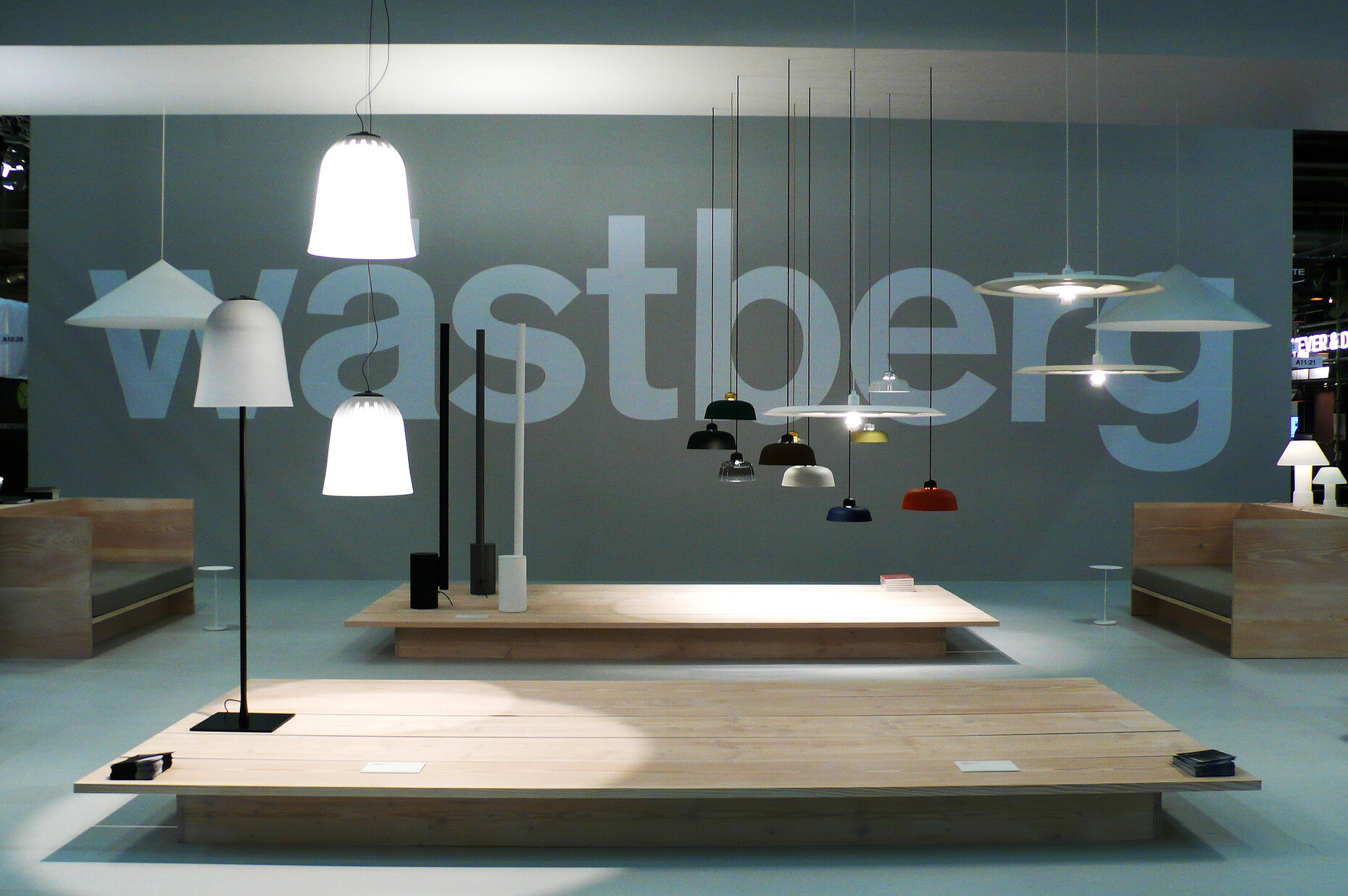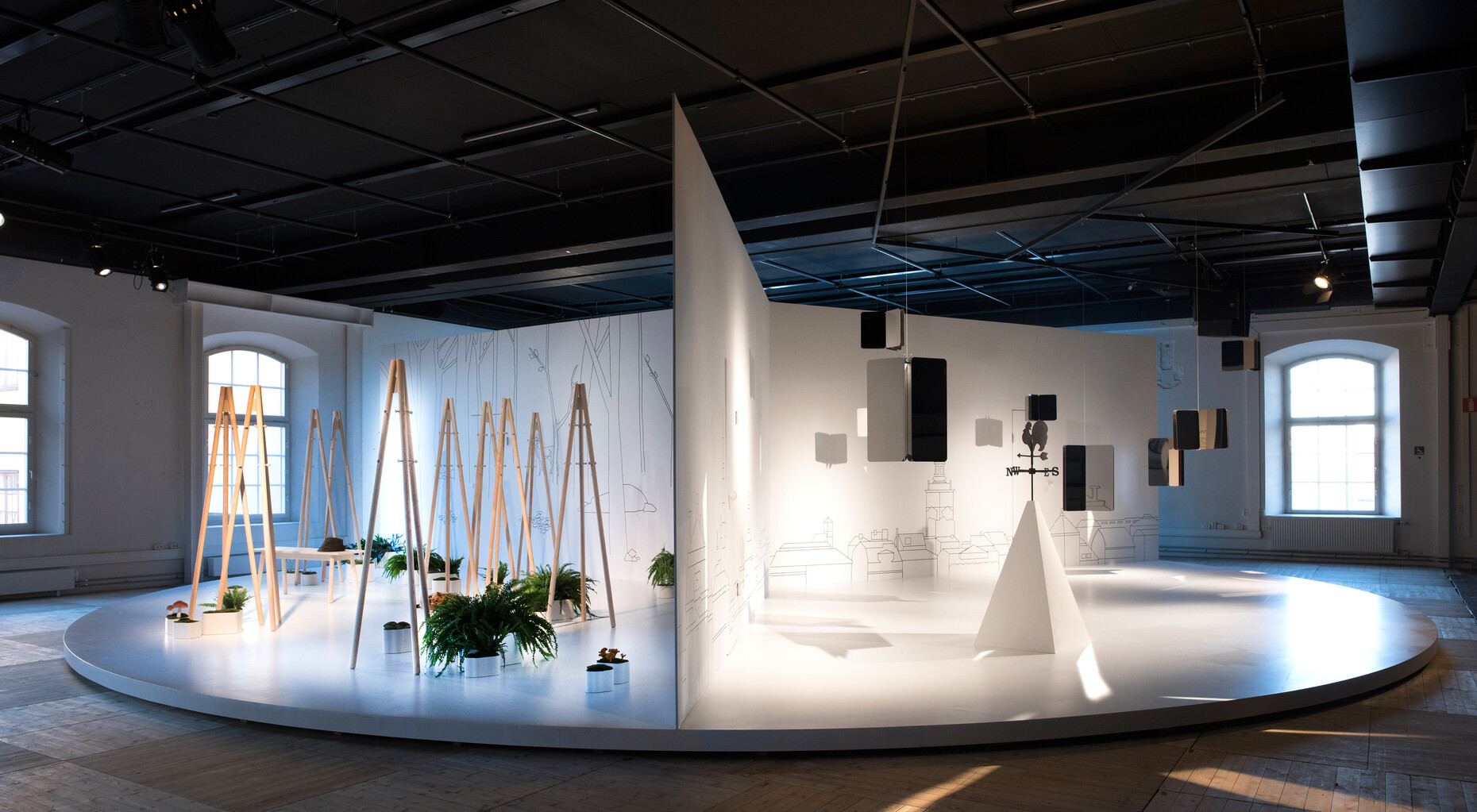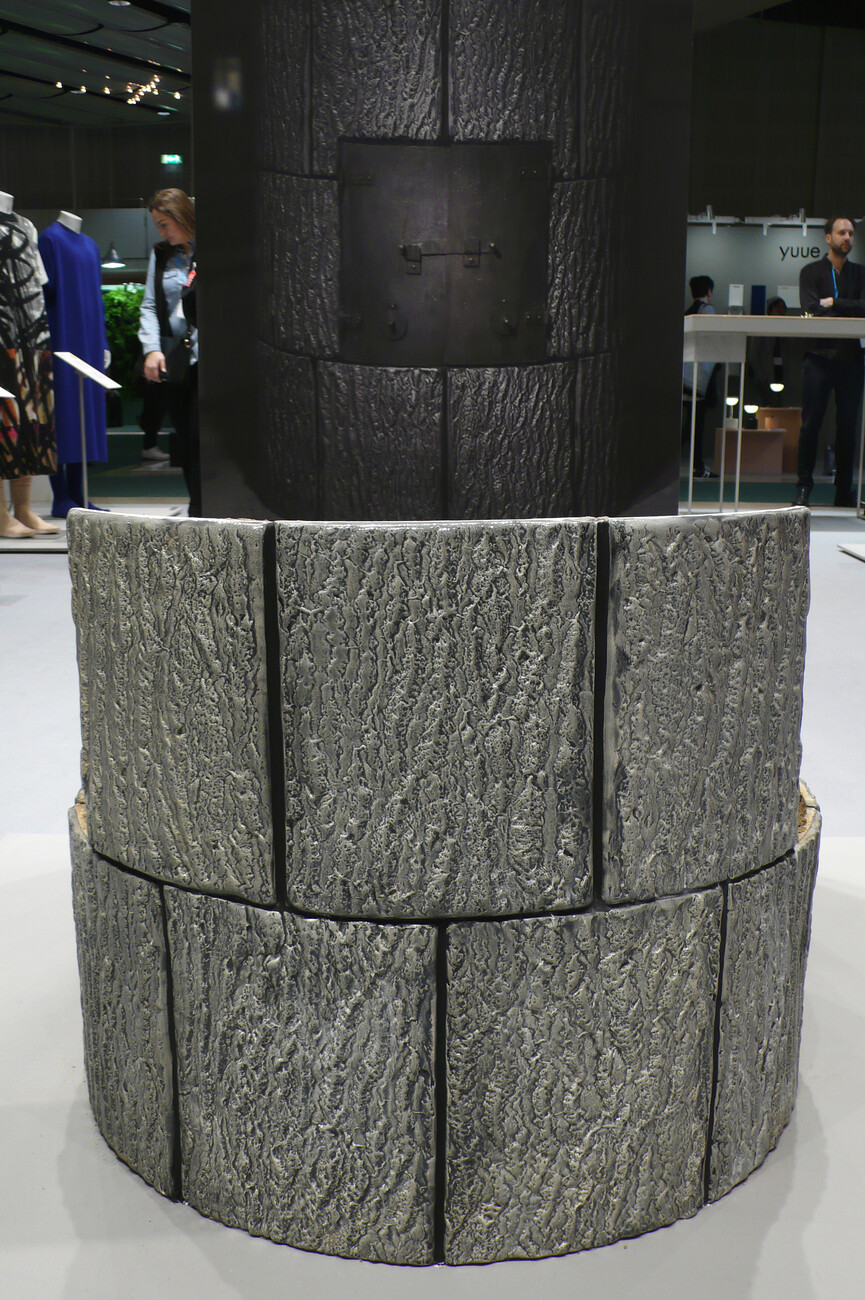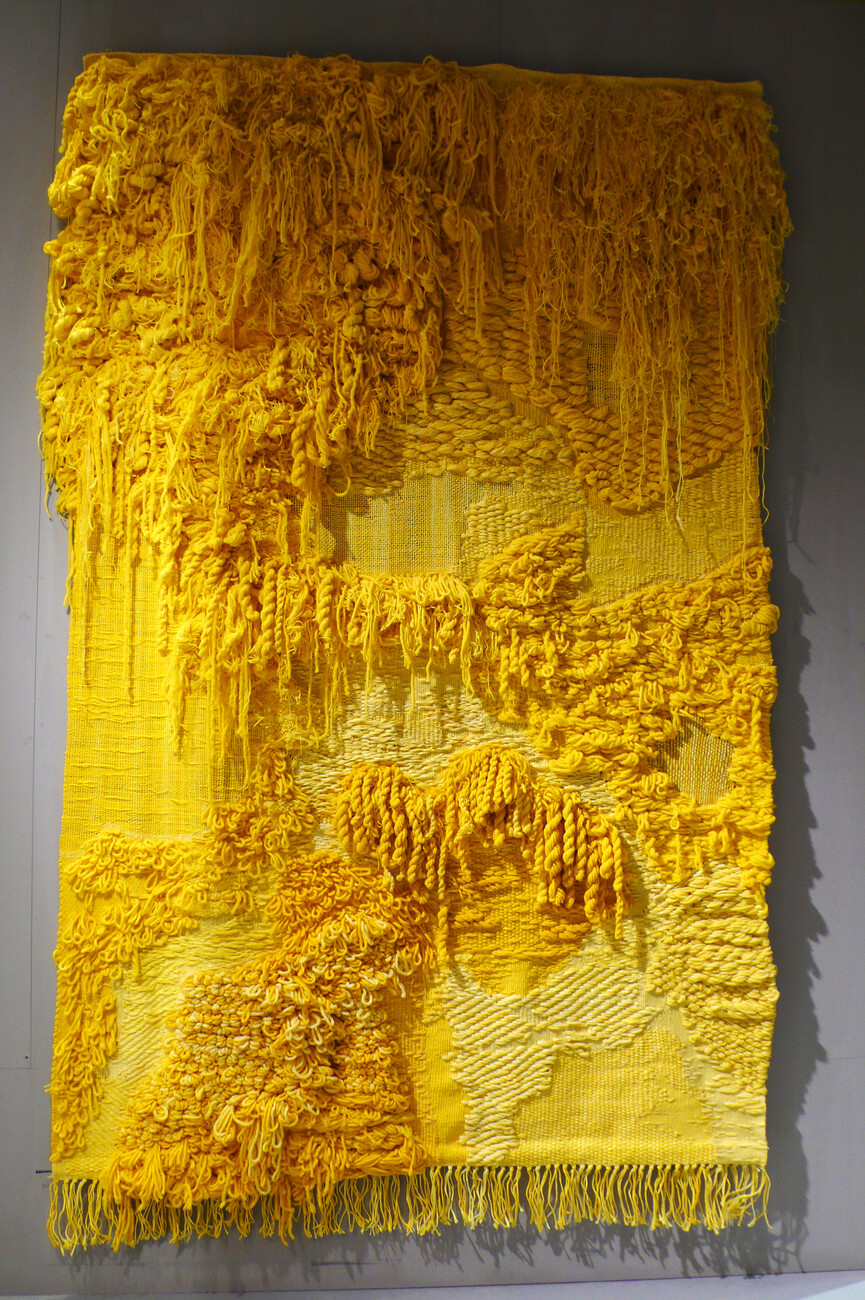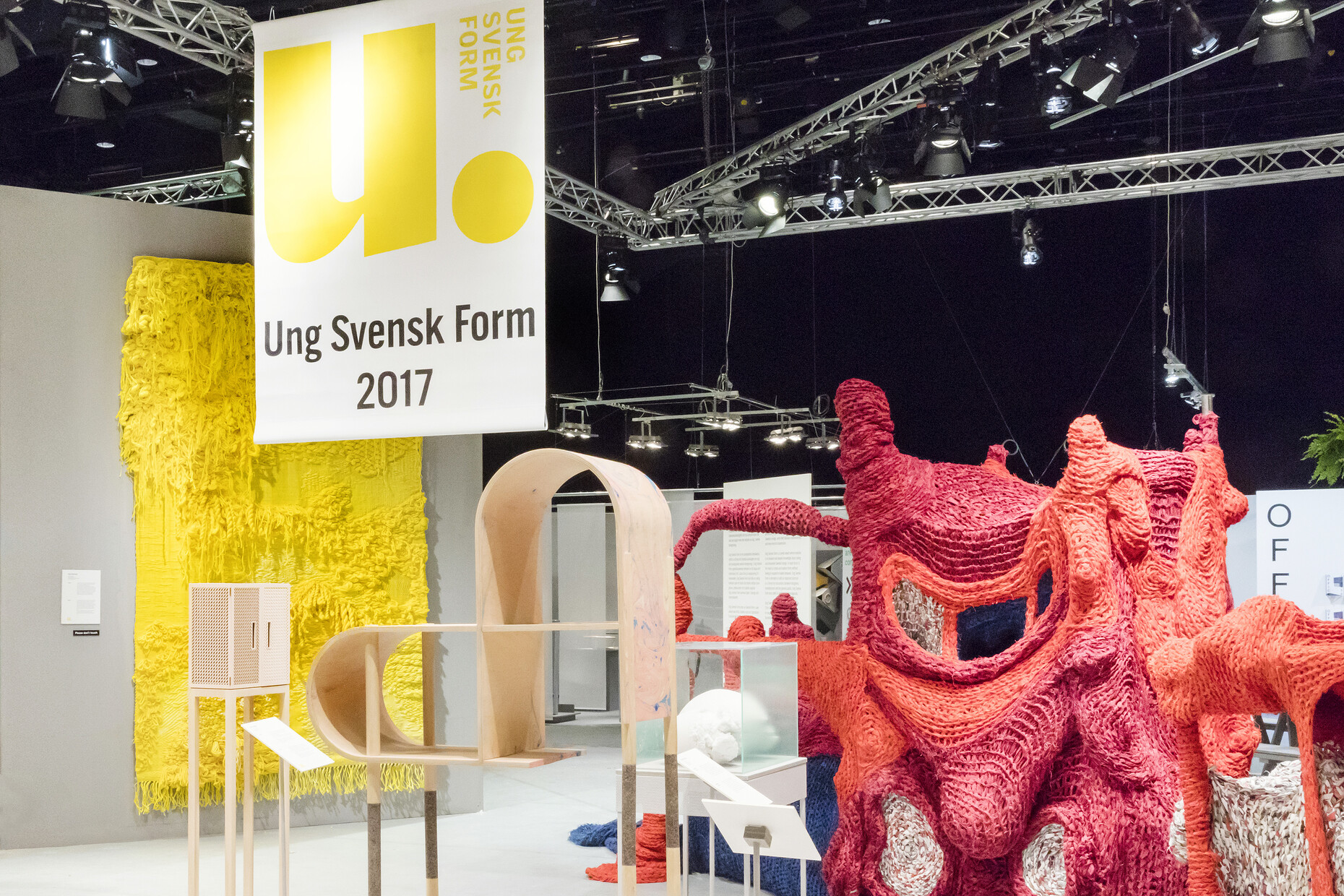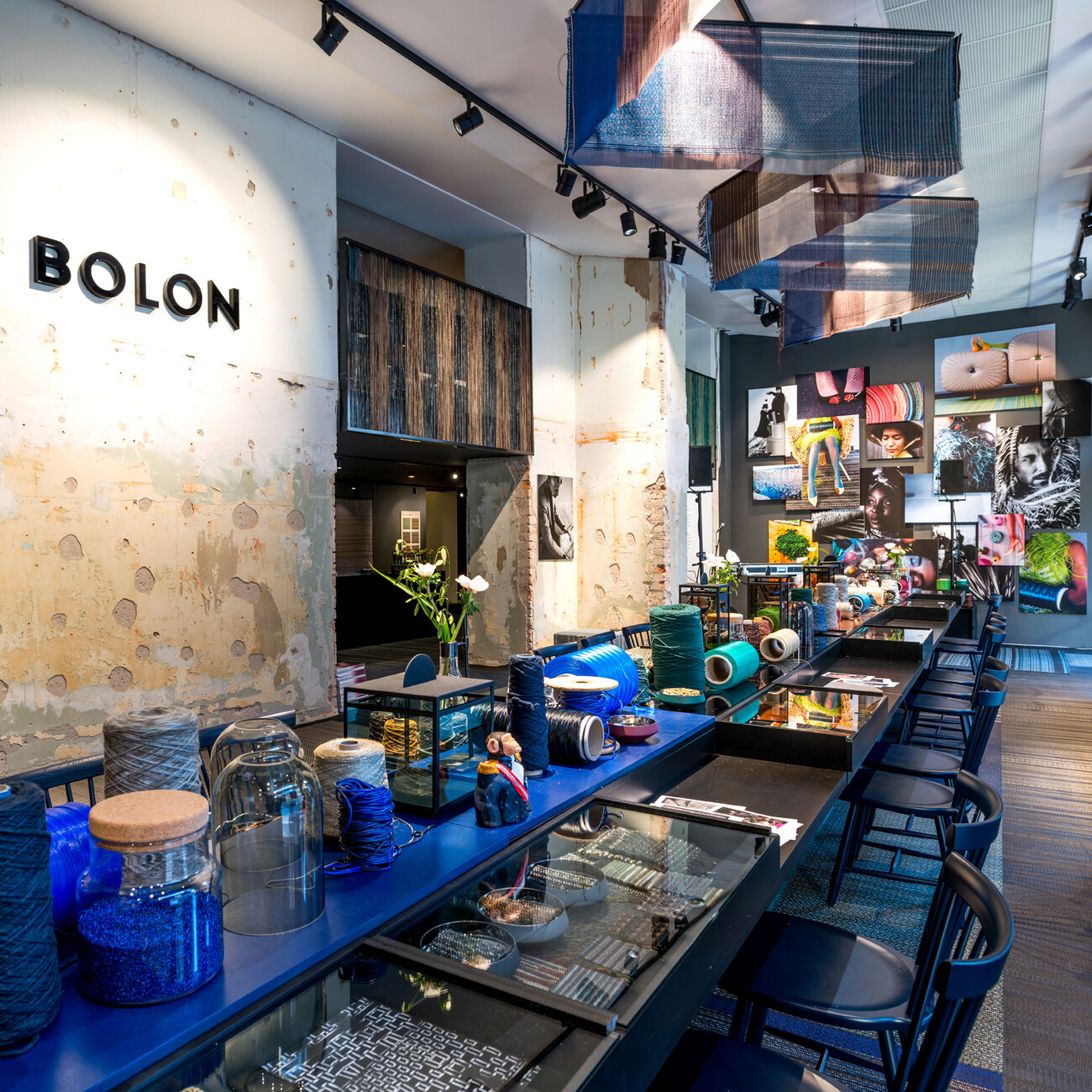Above all warm
Those moments that characterized Stockholm Design Week 2017? One example would be the morning in the atrium of a fine hotel, where traditional Swedish company Dux presented its new furniture collection. Trial sitting on a settee that is as comfortable as the box-spring beds for which Dux is otherwise renowned. Leaning back into the soft cushions, enjoying a cup of coffee in a pleasant atmosphere, all that remains to be said is: The Swedes really know how to do it, the good life that is. While an icy wind blows outside, inside the world is truly in order. It may be a cliché that the Nordic countries love making their homes comfy and beautiful, but the Design Week certainly shows that there’s a lot of truth to it.
Or take the example of the evening at Gärsnäs, another long-standing Swedish manufacturer, in business since 1893. Gärsnäs recently relocated to a new showroom, to the top floor of an old building in Gamla Stan, Stockholm’s old town. You get a great view of the harbor and the isles. Nine rooms completely outfitted as an apartment, complete with parquet floor, colored lead-glass windows, ceiling paintings, and wallpaper. A fire burns in the open hearth, a Jack Russell sniffs visitors’ legs, the new furniture mingles quite naturally with the classics from the portfolio, for example, Pierre Sindre’s “Dandy” armchair. With a backrest of Viennese wickerwork framed in leather it looks a bit as if it has always stood in this part of the room, but is actually brand new. The ease with which old and new are combined here, the warmth and leisure these interiors exude: The trip to freezing-cold Stockholm is worth it just for this.
The “Stockholm Furniture & Light Fair” forms the heart of the Design Week and features around 700 exhibitors, making it the world’s largest marketplace for Nordic design. About 80 percent of the exhibitors come from Scandinavia, with Sweden clearly playing the main role, with companies such as Kinnarps, Lammhults, Offecct and Fogia, ahead of Denmark, Finland and Norway. The Nordic mélange is combined with other European brands, but hardly any from outside the continent. Most of the new products are from Scandinavia, with exceptions proving the rule.
Anyone who a few weeks earlier visited the imm cologne or the Maison & Objet in Paris could not find anything new at the booths of Danish labels &tradition, Menu or Muuto. Conversely, Germany’s Flötotto used the fair to launch its new upholstered furniture collection “OTTO,” a project with “local heroes” courtesy of Stockholm design and architecture office Claesson Koivisto Rune. A name you encountered all over during the week. The three are behind Dux’s furniture items and busy advertising the third collection presented by their own label “Smaller Objects.” The rings under Mårten Claesson’s eyes were thus fairly dark after the first two days.
The warmth of Nordic interiors was also firmly evoked in the three trade-fair halls, above all by the colors. The furniture and the booths boasted subdued color tones, ranging from dusty pastel hues through mustard yellow to deep greens, blues and grays, frequently placed next to each other as monochrome surfaces. But you did come across one gleaming tone almost everywhere: a warm, dark red, now a Bordeaux, now brick red, sometimes rusty, sometimes shot with orange, other times salmon. This palette was rounded out by equally warm materials such as leather, velvet, velour, brass and the typically Nordic wood.
As if they had agreed on it, many manufacturers opted for dark-red upholstery covers, dark-red walls, and dark-red carpets. The red thread led from carpet brand Ogeborg and Belgian design label Valerie Objects via Gubi, Fredericia, Ferm Living or Hay to the young brands in the new section entitled “Established,” to new-talent design in the “Greenhouse” and the “trend exhibition” by stylist Lotta Agaton. Completely immersed in red and pink hues was the fair’s “Design Bar,” which this year was outfitted by Stockholm’s Note Design Studio with reddish-orange upholstered furniture, red chairs, pink curtains and partitions. It is interesting that the trade-fair organizers invited designer Jaime Hayon of all people as Special Guest 2017. Indeed, the good-humored Spaniard is known for his eccentric design approach. He installed a white pavilion in the foyer of the trade-fair halls, an architectural fantasy with portholes and a curved roof. In it, he showed a selection of his design objects – mythical creatures that exude extravagance rather more than warmth and coziness.
At Hay’s stand you could learn how to stage a design coup with decency: Rolf Hay took over the licenses for furniture by Friso Kramer and Wim Rietveld from the late 1950s from Dutch manufacturer Ahrend. And so that everyone was aware of the fact, Hay had several groups of the chair “Result” and the table and bench “Pyramid” screwed onto the stand’s long wall. A useful side effect of the spectacular presentation was that the delicate frames of folded sheet steel could be easily viewed from all sides. The furniture, originally designed for schools, definitely has a certain elegance, as does the currently so popular mid-century appeal.
At Menu too, likewise from Denmark, the mid-century style was in evidence, yet not in its original form here, but with a contemporary twist, or as Menu calls it, “Modernism Reimagined.” This may be a crossover of seat shell and sofa, for instance, as in the three-seater “Tailor” with its thin padding. The upholstered furniture “Septembre” is considerably fuller, its thick cushions framed by a black wooden shell. The young design labels, several of which could be found in Stockholm, likewise showed evidence of strong mid-century accents. These include Frama, Friends & Founders and Handvärk, all from Copenhagen. Here too we found shell chairs, black-painted tubular steel, side tables with marble tops and a leather daybed. Although the one or other complaint could be heard that the forays into the last century are getting boring, many of the exhibitors in Stockholm were certainly not through with the topic.
One special thing about the comparatively small Stockholm fair is that luminaire manufacturers can be found among the stands of the furniture brands, whereby the Scandinavian dominance continues. Yet with Foscarini, Nemo and Luceplan, there were also interesting Italian firms showcasing their products. At Luceplan for example we notice a small, elegantly curving wall luminaire, “Garbí” by David Dolcini. The Swedish label Zero on the other hand took advantage of the home game to present several new products, including the hybrid luminaire “Funghi” by Thomas Bernstrand. A wooden disc rests on a bollard, serving as light source and seat in one.
Wästberg, founded some ten years ago by Magnus Wästberg, is likewise from Sweden. At its booth it shone a light on two new products, including a very flat suspended luminaire with an undulating shade by architects Tham & Videgård. Like many other luminaire designs at present, “w 171 alma” directs the gaze on the bare bulb – a remarkable development indicating that the sector is indeed still searching for a decent replacement for the light bulb. Wästberg’s second novelty is Daniel Rybakken’s floor and suspended luminaire “w172 bokeh,” which represents an entirely new direction for the young Norwegian designer: The semi-transparent, white glass shade creates something like a soft focus, dimming the LED light.
Yet Rybakken’s major appearance was not at the fair, but on Stockholm’s “museum island” Skeppsholmen, where Artek from Helsinki showed its new products designed by Rybakken in a theater. To this end, Berlin architect Johanna Meyer-Grohbrügge developed a circular setting similar to a revolving stage. Only that here it was the visitors who had to move in order to see the coat stands called “Kiila” and the mirrors called “124°.” Drawings on the white walls and all kinds of props broke up the arrangement with a narrative note. With this cool, object-oriented presentation Artek set itself apart from the well-composed interiors that otherwise dominated the scene in Stockholm.
For a contemporary update of Scandinavian design we visited Hem. A young label with an eventful history, it has now settled in the district of Vasastan under the management of Petrus Palmér and offers everything you need for the ‘good life,’ from dining table to mortar. Or should we go for the classic after all? One of the key moments of Stockholm Design Week is no doubt a visit to the elaborate Svenskt Tenn store at the harbor to wallow in the wild patterns of Josef Frank. Especially as this year the traditional company invited Finn Harri Koskinen to rearrange Frank’s famous furniture and textiles in its display windows. So, should you need even more proof of how true the cliché of the Scandinavian sense of the beautiful home is – head to the store on Strandvägen.






